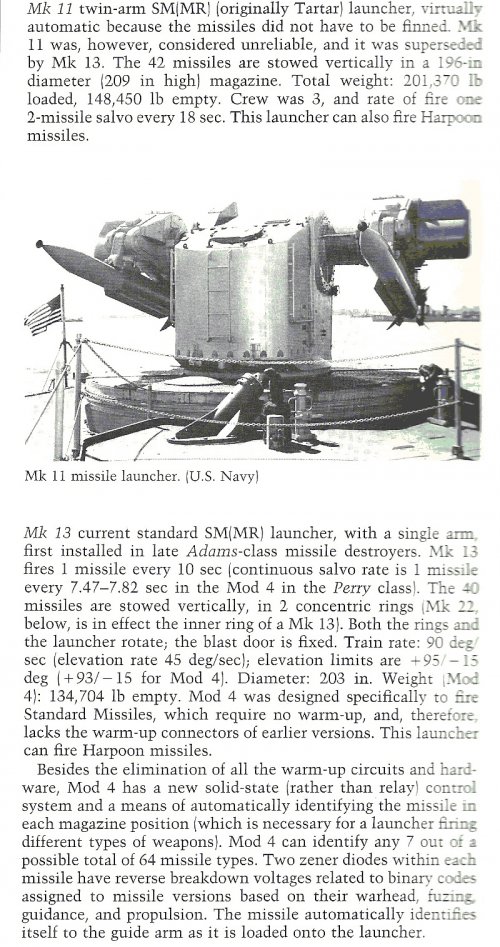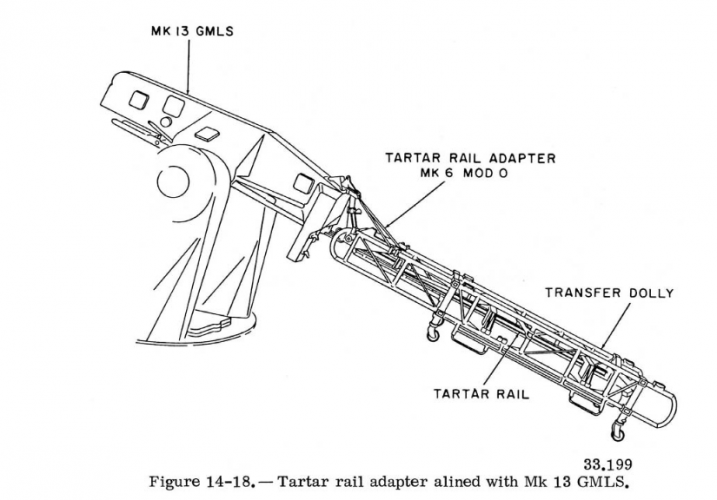saltedfish
ACCESS: Restricted
- Joined
- 11 April 2025
- Messages
- 8
- Reaction score
- 4
This is my first post and I'm stressing a bit about where to put it -- I hope this is an appropriate place to post this. If not, please let me know and I can move it. Thank you!
While the context is hypothetical vessel design, the reason I'm posting here is I've been trying to find the total tonnage of the Mk11/Mk13 launcher system, but I'm having a hard time getting a firm number. Wikipedia and other sources are pretty useless for specifics.
One document I found on this forum (GMM 3 and 2 CHAPTER Guided Missile Launching Systems) suggests the Mk 11 Launching System, without missiles and auxiliary equipment, weighs approximately 66 tons. But this is the only figure of its kind I can find, and it would be nice if there was another reference to verify the number or get a more accurate one. Ideally, I'd like the hypothetical I'm modeling to be as accurate as possible.
Can anyone direct me to some literature that might have a more comprehensive overview of the weight of early US Navy SAM systems? Or just more specific information about these systems in general?
Thank you in advance, and apologies if this should be somewhere else.
While the context is hypothetical vessel design, the reason I'm posting here is I've been trying to find the total tonnage of the Mk11/Mk13 launcher system, but I'm having a hard time getting a firm number. Wikipedia and other sources are pretty useless for specifics.
One document I found on this forum (GMM 3 and 2 CHAPTER Guided Missile Launching Systems) suggests the Mk 11 Launching System, without missiles and auxiliary equipment, weighs approximately 66 tons. But this is the only figure of its kind I can find, and it would be nice if there was another reference to verify the number or get a more accurate one. Ideally, I'd like the hypothetical I'm modeling to be as accurate as possible.
Can anyone direct me to some literature that might have a more comprehensive overview of the weight of early US Navy SAM systems? Or just more specific information about these systems in general?
Thank you in advance, and apologies if this should be somewhere else.



